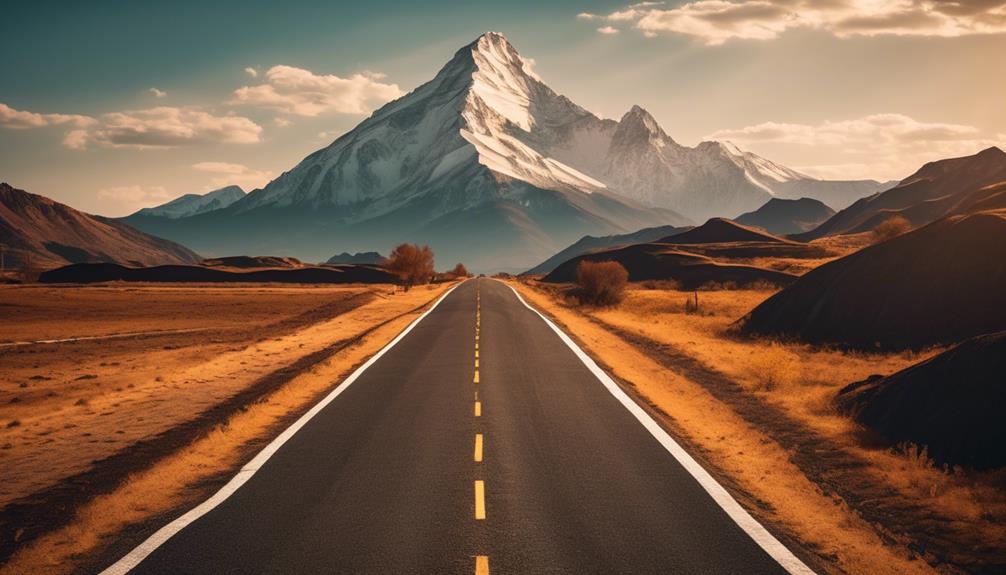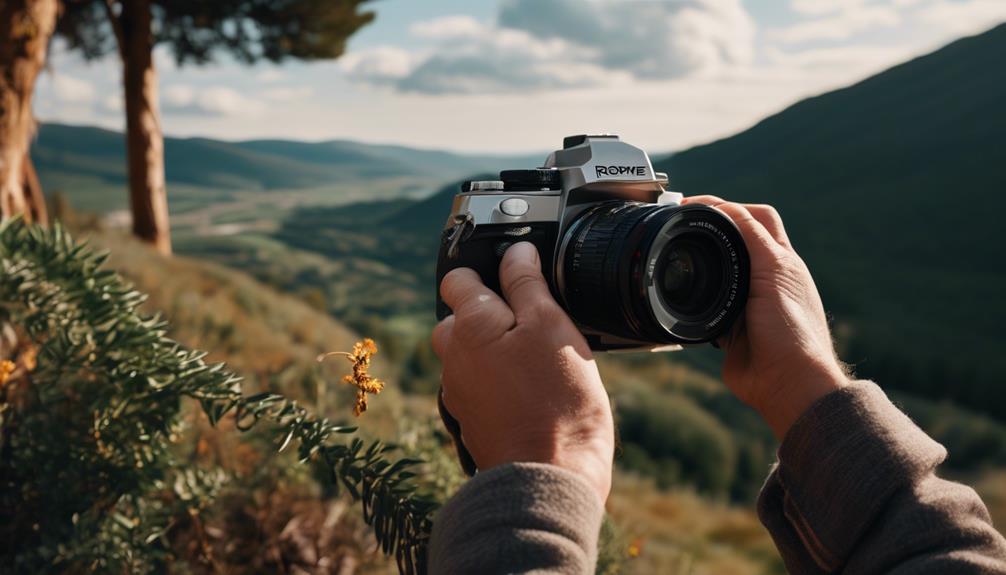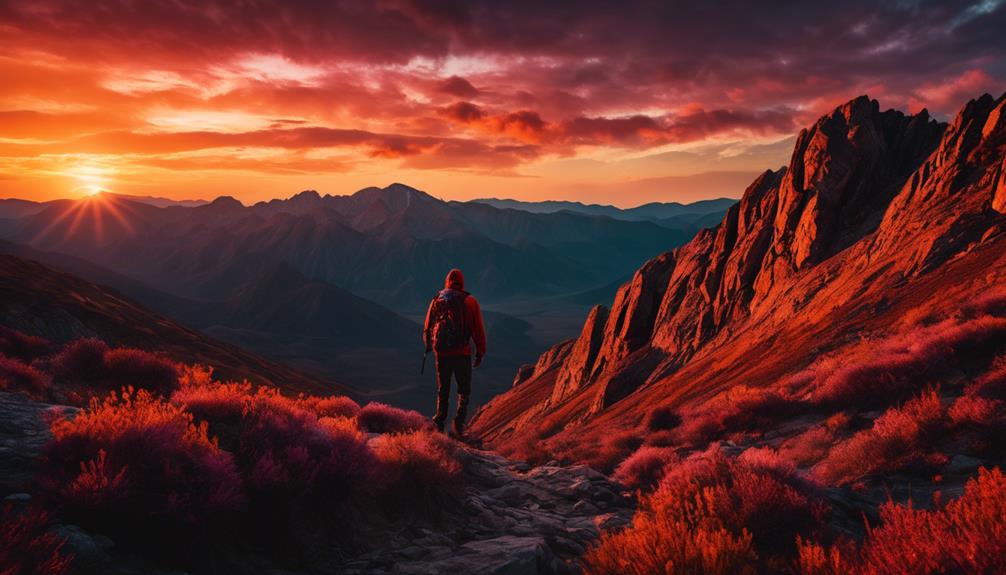Please note this post may contain affiliate links picked by me (Jay) that I have deemed may be of interest or relevant to you the reader of this.
These links do not affect the cost of the thing if you decide to purchase but i may get a little money if you choose to purchase.
For more information on my affiliate link policy click here.
As I stumbled upon the latest trends in photography composition for 2024, I couldn't help but marvel at the innovative techniques that have emerged. From the classic Rule of Thirds to the captivating Leading Lines, there is a plethora of methods that photographers are incorporating into their work to create stunning and impactful images.
But it doesn't stop there. Symmetry and Patterns, Depth and Layering, and the art of Framing and Negative Space are also making waves in the photography world. With each technique offering its own unique charm and visual appeal, there is no doubt that the future of photography composition is bound to be an exciting journey of creativity and exploration.
Key Takeaways
- Rule of Thirds: The rule of thirds is a fundamental technique in photography composition that divides the image into a grid of nine equal parts. By placing main subjects or important elements at the intersecting points, dynamic and interesting compositions can be created.
- Leading Lines: Leading lines are an effective technique to guide the viewer's eye and add depth and movement to the image. Experimenting with different lines, perspectives, and angles can enhance the impact of the composition.
- Symmetry and Patterns: Symmetry and patterns are captivating aspects of photography composition. Symmetry creates equilibrium and harmony, while patterns provide rhythm and visual interest. The repetition of lines, shapes, or colors adds dynamism, and visual balance ensures even distribution of elements.
- Depth and Layering: Creating depth and layering in images can make them immersive and captivating. Strategic positioning of elements in the foreground and background, along with the use of leading lines, varying sizes of objects, and perspective, adds scale and dimension to the photograph.
Rule of Thirds
The Rule of Thirds is a fundamental photography composition technique that helps create visually balanced and captivating images. It's based on the concept of the golden ratio, which is a mathematical ratio found in nature and art that's visually pleasing to the human eye.
The rule divides the image into a grid of nine equal parts, with two horizontal and two vertical lines intersecting at four points. These points, known as the focal points, are where the main subjects or important elements of the image should be placed. By placing the focal point off-center, the rule of thirds creates a more dynamic and interesting composition.
This technique allows the viewer's eye to naturally move around the image, exploring different elements and creating a sense of visual tension and balance. It's a powerful tool that can be used to create depth, add visual interest, and draw attention to specific areas of the photograph.
Incorporating the rule of thirds into your photography will elevate your composition and make your images more visually appealing and engaging.
Leading Lines
After mastering the rule of thirds, another powerful photography composition technique to explore is the use of leading lines. Leading lines are an effective way to guide the viewer's eye and create a sense of depth and movement in an image. By incorporating lines that lead from the foreground to the background or from one element to another, you can add visual storytelling to your photographs.
When it comes to leading lines, perspective and angles play a crucial role. The direction and placement of the lines can create different effects and convey different emotions. For example, diagonal lines can add dynamism and energy to a photo, while horizontal lines can create a sense of calmness and stability. By experimenting with different angles and perspectives, you can enhance the impact of your leading lines and create captivating compositions.
To better understand the power of leading lines, let's take a look at the following examples:
| Image 1 | Image 2 |
|---|---|
|  |  |
| Leading lines in the form of a road leading towards the horizon create a sense of depth and invite the viewer to explore the image. | The converging lines of the railway tracks draw the viewer's attention towards the subject in the distance, creating a strong focal point. |
Symmetry and Patterns
When exploring the realm of photography composition, one can't overlook the captivating aspects of symmetry and patterns. These elements play a crucial role in creating visually striking and balanced images.
Symmetry refers to the arrangement of elements in a photograph that are mirror images of each other, creating a sense of equilibrium and harmony. Patterns, on the other hand, involve the repetition of shapes, lines, or colors, providing a sense of rhythm and visual interest.
Visual balance is a key aspect of symmetry and patterns. It ensures that the elements in the photograph are evenly distributed, creating a sense of harmony and stability. This can be achieved by placing subjects or objects of interest at equal distances from the center or by using symmetrical compositions.
Repetition and rhythm are also important components of symmetry and patterns. By repeating elements in a photograph, such as lines, shapes, or colors, a sense of rhythm is created. This can add a dynamic and engaging quality to the image, capturing the viewer's attention.
Incorporating symmetry and patterns in photography composition allows for unique and visually stimulating images. They provide a sense of order and balance, while also adding a touch of creativity and innovation.
Depth and Layering
To create visually captivating and immersive images, photographers can utilize the composition technique of depth and layering. By strategically positioning elements in the foreground and background, photographers can create a sense of depth that draws viewers into the image and adds visual interest. This technique allows the photographer to guide the viewer's eye towards a specific focal point, creating a sense of perspective and depth in the photograph.
One way to achieve depth and layering in photography is by using leading lines. These are lines within the image that lead the viewer's eye from the foreground to the background, creating a sense of depth and dimension. Another technique is to include objects of varying sizes in the frame, with smaller objects in the foreground and larger objects in the background. This creates a sense of scale and adds depth to the image.
To further emphasize the importance of depth and layering in photography composition, consider the following table:
| Composition Technique | Description |
|---|---|
| Leading Lines | Lines that guide the viewer's eye through the image, creating a sense of depth. |
| Varying Sizes | Including objects of different sizes in the foreground and background to add depth and scale. |
| Overlapping Elements | Layering objects in the frame to create depth and dimension. |
Incorporating depth and layering in photography composition allows photographers to create visually dynamic and engaging images that truly captivate the viewer. By utilizing techniques such as leading lines and varying sizes, photographers can add depth and perspective, enhancing the overall impact of their photographs.
Framing and Negative Space
Framing and negative space are essential elements in photography composition that can greatly enhance the visual impact of an image. When it comes to framing, the goal is to create a sense of focus and draw the viewer's attention to the subject. This can be achieved by using elements within the scene to frame the subject, such as archways, windows, or even the natural surroundings. By using framing techniques, photographers can create a sense of depth and dimension, adding layers of interest to their images.
Negative space, on the other hand, refers to the empty or blank areas surrounding the subject. It's often used to create a sense of minimalism and simplicity, allowing the subject to stand out and take center stage. Balancing positive and negative space is crucial in creating a visually appealing composition. Too much negative space can make the image feel empty and lacking in interest, while too little can make the image feel cluttered and overwhelming.
Photographers can experiment with different framing techniques and negative space to create unique and innovative compositions. By understanding the impact of these elements and using them effectively, photographers can elevate their images to new heights, capturing the attention and imagination of their viewers.
Frequently Asked Questions
How Can I Effectively Use the Rule of Thirds in My Photography Composition?
To effectively use the rule of thirds in my photography composition, I focus on placing my subject along the imaginary grid lines. By doing so, I create a dynamic and balanced composition that draws the viewer's attention.
Additionally, I explore using diagonal lines in my compositions to add a sense of movement and energy.
Another technique I incorporate is the golden ratio, which helps me create visually pleasing compositions by dividing the frame into harmonious proportions.
What Are Some Examples of Leading Lines That I Can Incorporate Into My Photographs?
When it comes to incorporating leading lines in your photographs, there are various examples you can experiment with.
One trending technique is using diagonal lines to create a sense of movement and dynamism in your composition.
Another option is incorporating converging lines, which can draw the viewer's attention towards a specific focal point.
How Can I Create a Sense of Symmetry and Patterns in My Compositions?
To create a sense of symmetry and patterns in my compositions, I focus on creating balance and harmony. I look for elements in my surroundings that mirror each other or have a repetitive pattern.
What Techniques Can I Use to Add Depth and Layering to My Photographs?
To add depth and layering to my photographs, I experiment with various lighting techniques. By playing with shadows and highlights, I can create a three-dimensional effect that draws the viewer in.
Additionally, incorporating foreground and background elements helps to establish a sense of depth and dimension. By placing objects in the foreground and creating a sense of distance in the background, I can give my photos a layered and immersive feel.
These techniques allow me to create visually captivating images that stand out from the crowd.
How Can I Effectively Use Framing and Negative Space to Enhance My Compositions?
To effectively use framing and negative space in photography, I explore unconventional angles and perspectives. By experimenting with different viewpoints, I can create visually captivating compositions that draw the viewer's attention.
Additionally, I use color contrast to enhance my compositions, playing with vibrant hues and contrasting tones to create depth and visual interest. These techniques allow me to push the boundaries of traditional composition and create innovative and captivating photographs.
Conclusion
As I wrap up my exploration of 2024's trending techniques in photography composition, I'm left in awe of the artistic possibilities that lie ahead.
Just like the vibrant colors that dance on a painter's palette, these techniques breathe life into the captured moments.
They're the brushstrokes that paint a vivid picture, guiding the viewer's eye with the precision of a conductor's baton.
So, let's embrace these tools and unleash our creativity, for the world of photography awaits our visionary perspectives.


